Total War: Warhammer is the tabletop war game come to life on PC
A logical, lovely extension of the miniatures game
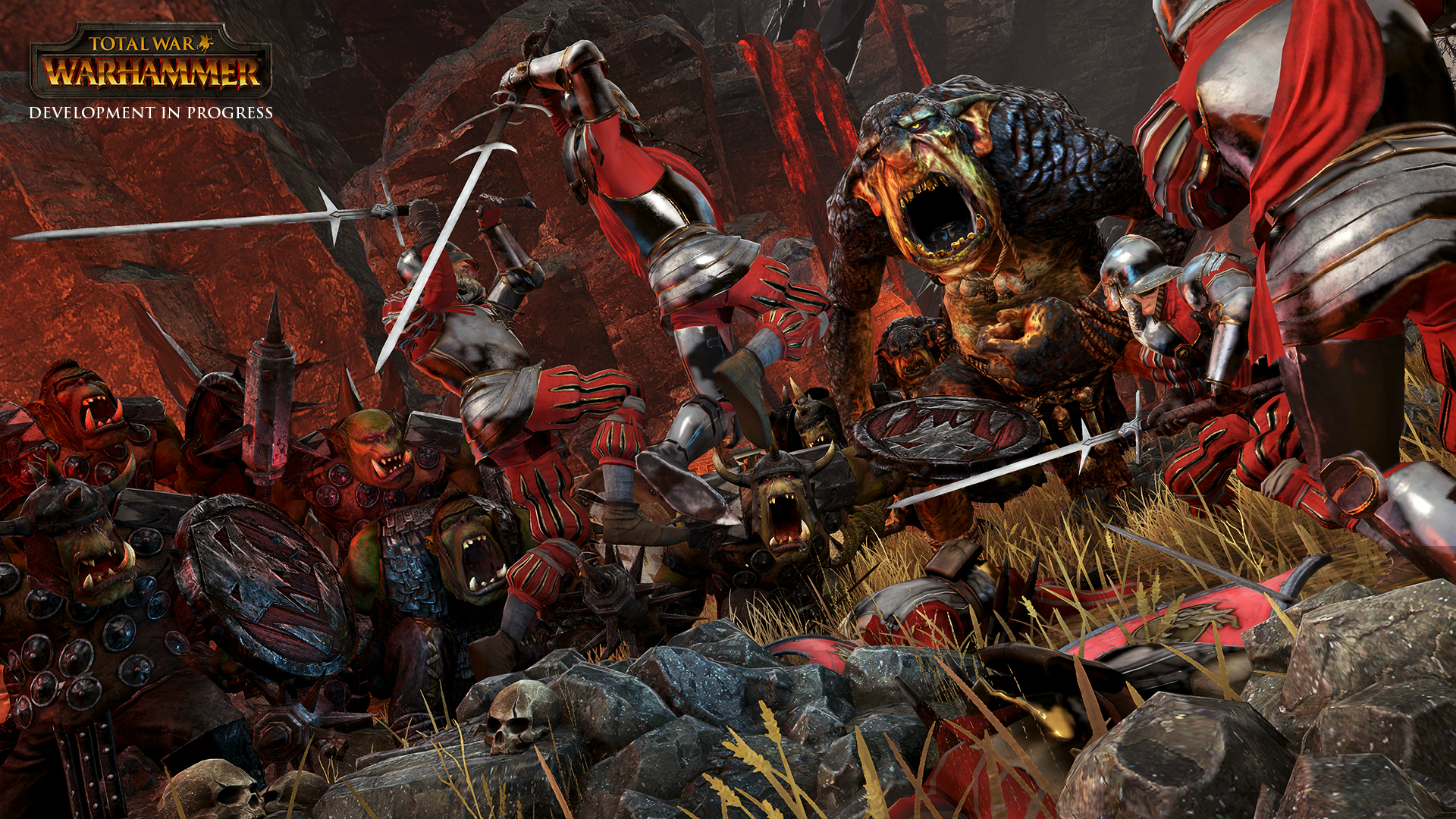
Now, it's been nearly 20 years since I last put a tiny paintbrush to a figurine or ran my fingers against the turf of a war game table at a local Games Workshop store. But, after just playing a few hours of Total War: Warhammer, I'm so sucked in that I almost want to blow another couple hundred bucks on a squad of minis and get to painting.
Or, you know, I could just play more of the game. I think I'll do that first.
For the uninitiated, the Total War series is a long-running franchise of strategy games by developer Creative Assembly and publisher Sega. Focusing more on the realism of historical combat – feudal Japan, medieval Europe, bronze age Greco-Roman, that sort of stuff – the Total War series hasn't touched on fantasy much, if at all.
But, if you look at how most Total War games are structured, focusing the player's control of an army over squads of units rather than individuals save for commanding officers, this adaptation of the game couldn't make more sense. Players of the Warhammer tabletop war game know full well that this, too, is how that respective game is structured.
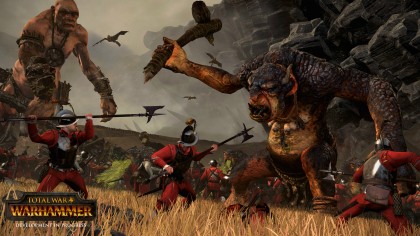
They're veritable peas in a pod. (That sounds a bit too cute given the subject matter, but we'll go with it.)
[Editor's Note: My preview of Total War: Warhammer did not include online multiplayer, though this will be available at launch in 1v1 through 4v4 configurations.]
Like peanut butter and jelly
The fortunate thing for Sega and Creative Assembly is that this game has two sources of dedicated fandom to play toward: the Total War nuts and the Warhammer fanatics. Almost as if on account of Creative Assembly's pedigree, Total War: Warhammer seems poised to please both ends of the fan spectrum easily.
Get daily insight, inspiration and deals in your inbox
Sign up for breaking news, reviews, opinion, top tech deals, and more.
The way in which you deploy units is so reminiscent of placing miniatures on the tabletop covered in turf and painted styrofoam that it almost feels like a homecoming.
With 10 Total War games under its belt, the CA team seems to have had this in the bag from the start. It seems so effortless in how it caters to the Warhammer rules and structure while simply being a Total War game.
It kind of makes you wonder why such a game took this long. But, hey, forget about that – it's here now, and it's a helluva lot of fun. (That is, if outfitting, setting up and deploying armies across vast battlefields, accounting for strategies like flanking and height advantage, and then commanding said armies like a god is your thing. Can you tell it's my thing?)
The game's single-player modes consist of two major play styles. You can either see numerous campaigns through across four playable races-slash-factions – the human Empire, the Dwarfs, the Vampire Counts and the Greenskins (Orcs, Goblins, etc). Or, you can create custom, one-off matches with various toggles for maps, army size and budgets and much more.
Campaigns see you through a pretty well-told, lore-rich stories (if you're into high fantasy) that require you to stamp out the threats surrounding your kingdom on an overworld map representing Warhammer's world(s) of the Old World and New World – it's complicated and very hyper-violent Tolkien-esque, if you catch my drift.
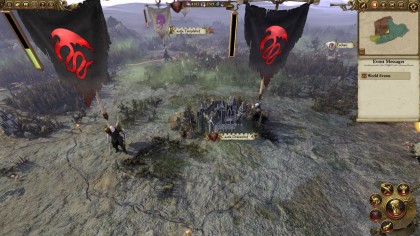
As you expand your influence, you're tasked with building out settlements through various trees containing options for either improving your resources for the armies you build or for improving said armies with new or enhanced units. Generally, you'll find yourself focusing your army-generating efforts on a select few, well-defended kingdoms surrounded by patrolled satellite settlements that generate resources.
However, I find the campaign overview interface to be a little convoluted and tough to navigate. While there is a well-voiced tutorial available for each campaign, I almost wish it were more thorough and in-your-face than it is. While I definitely understand enough of the game's mechanics to get through, it's mostly through inference rather than the result of a tutorial tip.
Of course, I wholly expect to get used to more of the game's finer aspects – like diplomacy, for instance – as I play. If only these were deliberately covered sooner by the tutorials.
Luckily, the combat interface is far more intuitive and easy to understand, even if it, too, I found lacking in tutorials.
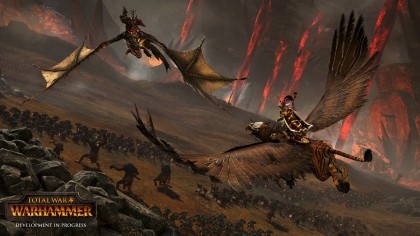
The thrill of command
Preparation and deployment are nearly everything in Total War: Warhammer, and not a ton is explained outright to you through each campaign's tutorial mission. I found pausing battles using the "P" key invaluable for digesting the information provided when mousing over each squad of units.
The major events of a battle seem to happen in waves of units shifting position, peppered with crucial moments, like the deathblow to an enemy Warboss, that instantly shift the tide.
That said, terms like "routing", "shaken", "flanking", are pretty obvious to someone who is a fan of strategy games whether on a tabletop or at a computer screen. Admittedly, to someone who's played a lot strategy games, it's relatively easy to adapt to the concepts of Total War's (and Warhammer's) high-realism approach to the genre.
If you can't say that for yourself, then you might want to prepare for a lot of reading and trial and error.
So, say you're about to enter a combat scenario from either a campaign interaction or a custom match. First, you build your forces with a healthy mix of melee units (generally swordsmen, spearmen and hammerers) and ranged units. These vary wildly depending on your faction, from the Dwarfs' flamethrowing Iron Drakes to the Empire's grenade-launching Outriders.
Oh, and don't forget your hero units. These beefier characters have the ability to rally the forces around them and deal serious damage with special abilities or magic. (These will generally go toe-to-toe with your enemy's hero units.)
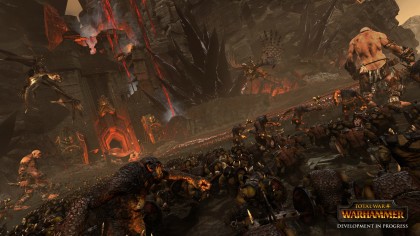
Then, you deploy your units across the battlefield for what's generally a traditional, charge-forward-and-flank-the-enemy scenario. But, even the presence of a few hills or plateaus can drastically affect the strategic implications of your deployment.
The tabletop come to life
The way in which you deploy units in Total War: Warhammer is so reminiscent of placing miniatures on the tabletop covered in turf and painted styrofoam that it almost feels like a homecoming.
Then, I press the "Start Battle" button, and there's no going back.
While trying to keep a wide view on all of my forces' positioning against the hordes of giant spider-riding Goblins, I can't help but zoom in on a particular hilltop as my Dwarfish Irondrakes begin torching an encroaching squad of Goblin spearmen.
This is when the Orcish Warboss approaches on the field, dead center between two bluffs toward my Dwarfish Thane. I immediately pause the game, tell my Thane to activate his Foeseeker ability to charge the enemy faster, and tell a squad of Longbeard infantrymen to support him. I unpause the game and immediately zoom in to see my decisions play out.
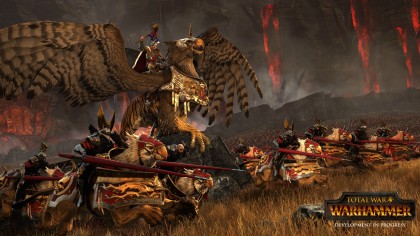
And the game rewards me greatly with an incredibly faithful display of classic Warhammer units clashing axe and spear in gorgeous detail. Dwarfish beards wag in the wind as Orcish arrows soar through the sky, all clear as day thanks to a zoom camera system. (Though, I wish the camera had mouse control.)
It's simply incredible how much Total War: Warhammer feels like a 1:1 digital representation of the decades-old tabletop war game.
Luckily, Creative Assembly's recommended system specs aren't terribly steep. That said, if it's been more than a few years since your last graphics card, you're definitely going to need an upgrade. If you're rocking the latest hardware, then boy you're in for a treat.
At any rate, controlling your various units on the fly is an absolute rush, especially with how certain unit types, namely cavalry, sweep across the battlefield in seconds. The ebb and flow of a battle demands macro-level decisions from you on top of monitoring smaller pockets of conflict.
The major events of a battle seem to happen in waves of units shifting position, peppered with crucial moments, like the deathblow to an enemy Warboss, that instantly shift the tide. All the while, you feel like the maestro orchestrating the scene and a commander barking orders simultaneously.
And, it's all thanks to a clever, intuitive interface and control scheme that gets out of the way of the action unfolding.
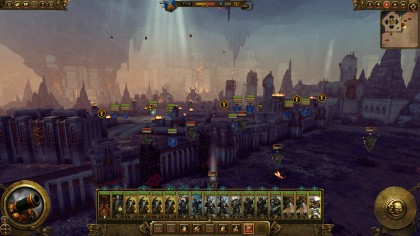
Early verdict
It's simply incredible how much Total War: Warhammer feels like a 1:1 digital representation of the decades-old tabletop war game. Even after a short time with the game, that's clearly thanks to both Creative Assembly's pedigree and a talented, meticulous team.
The attention to detail in this game is uncanny, and while other adaptations have nailed the Warhammer style before, seeing these characters ripped straight from the miniatures boxes is another level of nostalgia fuel that can't be matched. But, Total War: Warhammer doesn't rest on those laurels for a second.
This is an incredibly deep, cerebral strategy game in the same way its source material is, one that rewards smart planning and sharp decision making in the moment with glorious, fantastical displays of victory.
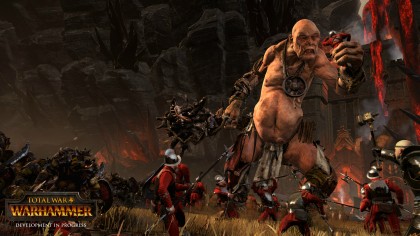
That said, I recommend installing this game on a solid-state drive, as I find load times on a 5,400 rpm hard drive to be quite long. And, if you're not a strategy game veteran, strap in for some heavy reading and trial-and-error before you get the hang of things.
But, even if Creative Assembly doesn't manage to address these minor quibbles with Total War: Warhammer before its May 24 release, rest assured that this is not only one of the most entertaining Total War games to date. This is the quintessential Warhammer video game.
- These are the best PC games to play right now
Joe Osborne is the Senior Technology Editor at Insider Inc. His role is to leads the technology coverage team for the Business Insider Shopping team, facilitating expert reviews, comprehensive buying guides, snap deals news and more. Previously, Joe was TechRadar's US computing editor, leading reviews of everything from gaming PCs to internal components and accessories. In his spare time, Joe is a renowned Dungeons and Dragons dungeon master – and arguably the nicest man in tech.
